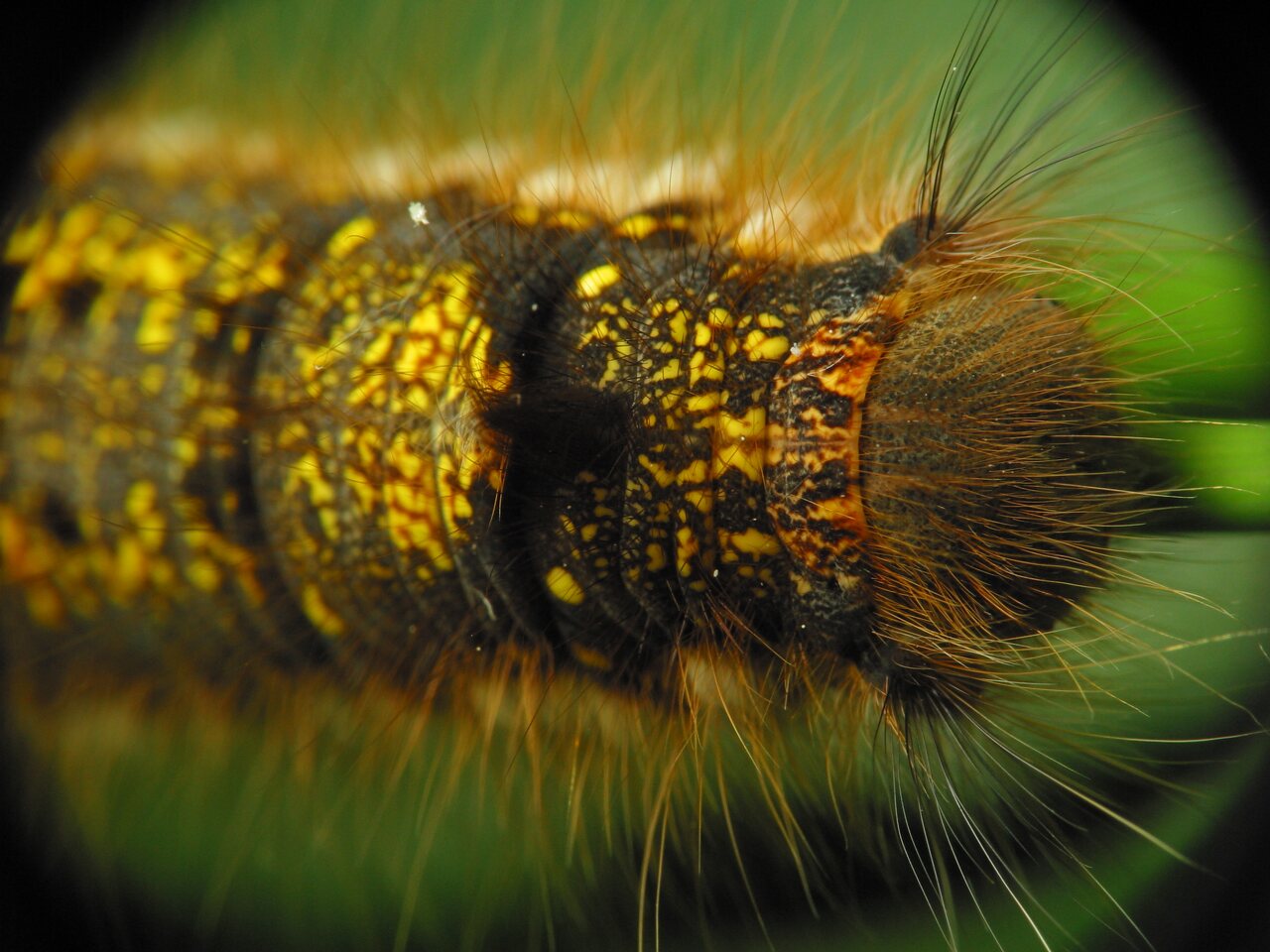
Euthrix potatoria caterpillar · pievinis verpikas, vikšras
- drinker
- Grasglucke, Trinkerin
- pievinis verpikas
- graudzāļu vērpējs
- napójka łąkówka, barczatka napójka
- en.wikipedia.org/wiki/Euthrix_potatoria
- pyrgus.de/Euthrix_potatoria_en.html
- naturespot.org.uk/species/drinker
The fully grown larva is about 6 cm long, hairy, striped and spotted, with distinctive tufts fore and aft. Larvae hibernate while young and resume feeding in the spring, pupating in a cocoon during the summer.
This nocturnal moth flies from June to August depending on the location. Males especially are attracted to light. The females lay their eggs in small clusters, mainly on the stem of grasses or reeds. The larvae feed on various grasses and reeds.‥